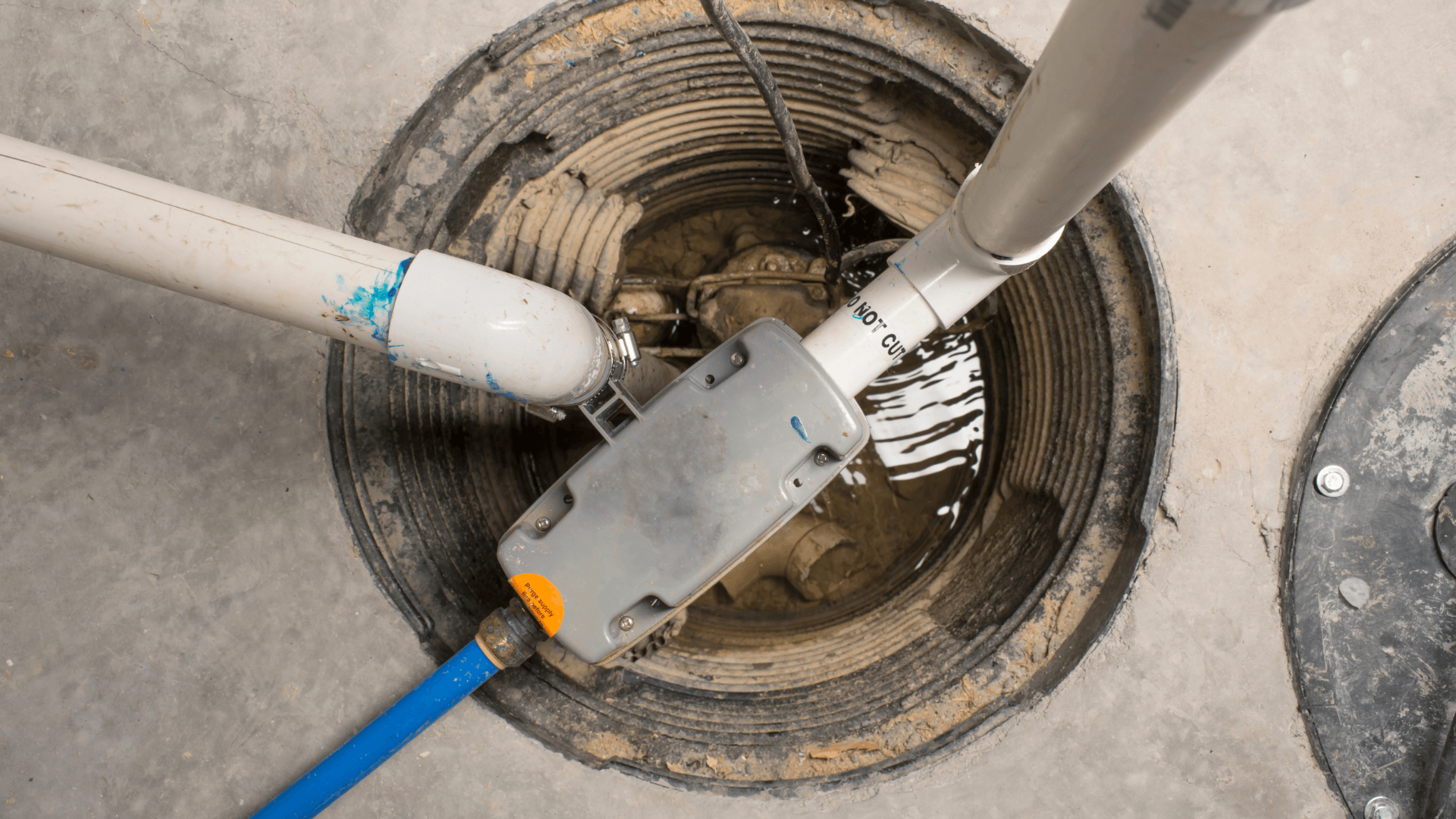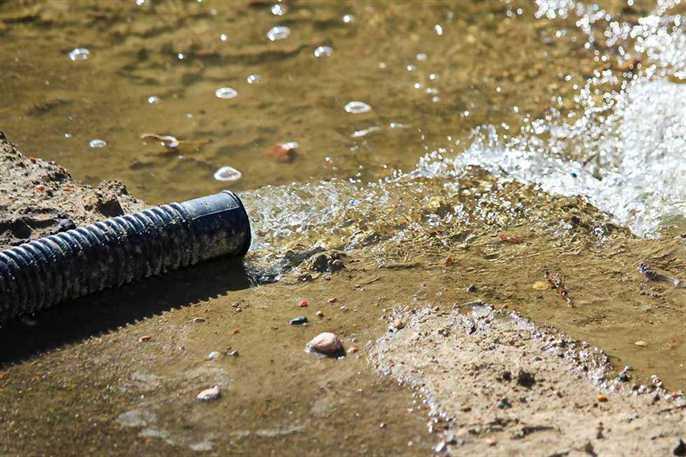We've stumbled on this article involving Cleaning & Maintenance Tips for Your Home's Sump Pump below on the web and decided it made sense to talk about it with you here.

Sump pumps are vital elements in many homes, especially in locations vulnerable to flooding or excessive moisture. They help stop water damage by effectively eliminating excess water from cellars or crawl spaces. Nevertheless, like any other home appliance, sump pumps call for regular maintenance to ensure they operate effectively when needed the most. Cleaning your sump pump is an essential part of its upkeep, and comprehending how to do it effectively can conserve you from costly fixings and potential disasters.
Introduction
Maintaining a clean sump pump is important for its appropriate performance and longevity. Disregarding this important job can lead to clogs, breakdowns, and eventually, water damage to your building. Consequently, learning how to cleanse a sump pump is vital for homeowners that rely upon these tools to maintain their cellars dry and protected.
Recognizing the Sump Pump
Before diving into the cleansing process, it's important to have a basic understanding of how a sump pump functions. Generally set up in a pit or basin below the cellar floor, a sump pump consists of numerous key parts, including a pump, a float switch, and a discharge pipe. When water accumulates in the pit, the float switch turns on the pump, which after that pumps the water out with the discharge pipeline, away from the structure's foundation.
Signs of a Dirty Sump Pump
Knowing when your sump pump needs cleaning is important for preventing possible malfunctions. Some typical indicators that indicate a filthy sump pump include unusual noises throughout operation, decreased water flow, and visible particles in the pit. If you observe any one of these symptoms, it's important to cleanse your sump pump immediately to stay clear of any more problems.
Getting ready for Cleaning
Prior to you start cleaning your sump pump, it's vital to take some security preventative measures. Beginning by shutting down the power to the pump to prevent any type of electric crashes. Furthermore, put on proper safety gear, such as gloves and goggles, to protect yourself from dirt, debris, and prospective virus.
Detailed Guide to Cleaning Up a Sump Pump
Turning off the Power
Begin by separating the power supply to the sump pump to avoid any kind of mishaps while cleansing.
Removing Debris and Dust
Make use of a pail or an inside story to remove any noticeable debris, dust, or sediment from the sump pit. Dispose of the particles correctly to stop it from obstructing the pump or the discharge pipeline.
Cleaning the Pump and Float Change
When the pit is free from debris, thoroughly remove the pump from the pit. Inspect the pump and the float button for any type of indicators of damages or wear. Utilize a soft brush or towel to cleanse the surface areas and eliminate any kind of accumulated gunk.
Flushing the System
After cleansing the pump and float switch, purge the sump pit with tidy water to get rid of any type of staying dirt or debris. This will help make certain that the pump runs smoothly and effectively.
Looking For Appropriate Performance
Before re-installing the pump, perform a fast examination to make certain that the float button triggers the pump properly. Pour some water right into the sump pit and observe the pump's operation. If everything is working appropriately, you can rebuild the pump and reconnect the power supply.
Upkeep Tips to Maintain Your Sump Pump Clean
In addition to regular cleaning, there are a number of maintenance tips you can follow to maintain your sump pump in ideal condition:
Final thought
Cleansing your sump pump is a crucial aspect of its upkeep and makes sure that it operates effectively when you require it the most. By following the actions described in this guide and incorporating routine upkeep right into your routine, you can prolong the life expectancy of your sump pump and protect your home from water damage.
6 STEPS ON HOW TO CLEAN A SUMP PUMP PROPERLY
UNDERSTANDING SUMP PUMPS
Your sump pump plays a crucial role in protecting your home by managing and removing excess water. It primarily functions as a “shield”, guarding your basement against the damaging effects of water accumulation. The pump is housed in a sump pit in the lowest part of your basement, and its job is to pump out any water that collects there.
During heavy rainfalls or when snow melts rapidly, water can infiltrate your basement, posing potential risks like flooding, structural damage, and harmful mold growth. Here, the sump pump springs into action, pumping out the intruding water and directing it away from your home.
SAFETY FIRST
Before cleaning, remember to prioritize safety. Disconnect the sump pump from the power source to prevent any accidental electric shocks. Also, wear sturdy gloves to protect your hands from any sharp or dirty components within the pump.
REMOVE THE SUMP PUMP
After ensuring your safety, the next step is to remove the sump pump from its pit. Doing this might require careful maneuvering as you don’t want to damage any pump components. Once removed, clean the sump pit to remove any accumulated debris or sludge.
INSPECT THE PUMP
Inspect the pump for any visible signs of wear or damage. Check the power cord, float switch, and impeller housing. If any components look worn out or damaged, consider replacing them to ensure optimal performance.
CLEAN THE PUMP
Thoroughly clean the pump with warm, soapy water. Make sure to rid it of any dirt, gravel, or other debris that might impede its performance. You can use a toothbrush to clean the small, hard-to-reach parts of the pump.
REINSTALL THE SUMP PUMP
Reinstall the pump into the sump pit Make sure it’s positioned correctly to remove the water effectively Once it’s back in place, reconnect it to the power source TEST THE PUMP
Finally, pour some water into the pit to ensure the pump works correctly. It should start automatically and begin pumping out the water; if it doesn’t, check the power source and the positioning of the pump.
Remember, while cleaning your sump pump is an essential part of home maintenance, hiring a professional plumber for a thorough inspection and cleaning at least once a year is also important. This will ensure that your pump is in optimal condition, ready to protect your home from potential water damage.
BEST PRACTICES FOR CLEANING SUMP PUMP DISCHARGE PIPES
Regular Inspection: Regularly inspect your discharge pipes, especially during heavy rainfall or snowmelt periods. Look for any signs of blockage or damage. Early detection of problems can prevent serious issues down the line. Periodic Cleaning: Over time, sediment and debris can accumulate in the discharge pipes, impeding the flow of water. Regular cleaning helps keep the pipes clear and functioning efficiently. You can use a high-pressure water jet to effectively clean the pipes. Insulation During Winter: In colder climates, discharge pipes can freeze, blocking the outflow of water. Protect your discharge pipes from freezing temperatures by insulating them with foam pipe insulation. This will ensure the sump pump can continue to discharge water even in freezing conditions. Proper Positioning: The discharge pipe should be positioned to direct water away from your home’s foundation. Improper positioning can lead to water seeping back into the basement. Ensure the pipe is long enough and angled correctly. Installation of a Check Valve: A check valve prevents water from flowing back into your sump pit after the pump has pushed it out. Installing a check valve helps maintain the efficiency of your sump pump and reduces the risk of flooding. Minimize Pipe Turns: Every curve or turn in the discharge pipe can decrease the efficiency of water flow. By minimizing turns and bends in your discharge pipe, you can increase the efficiency of your sump pump. https://www.fullspeedplumbing.com/how-to-clean-a-sump-pump-properly9999/

As a serious person who reads about Steps to Cleaning Your Sump Pump Properly, I assumed sharing that segment was a good idea. Are you aware of somebody else who is excited by the niche? Why not promote it. Thanks for your time. Come back soon.
Click Here